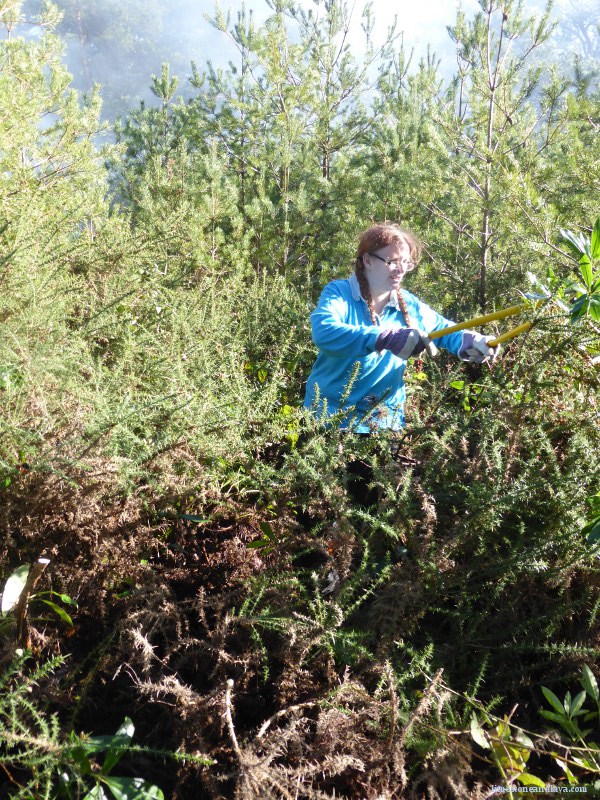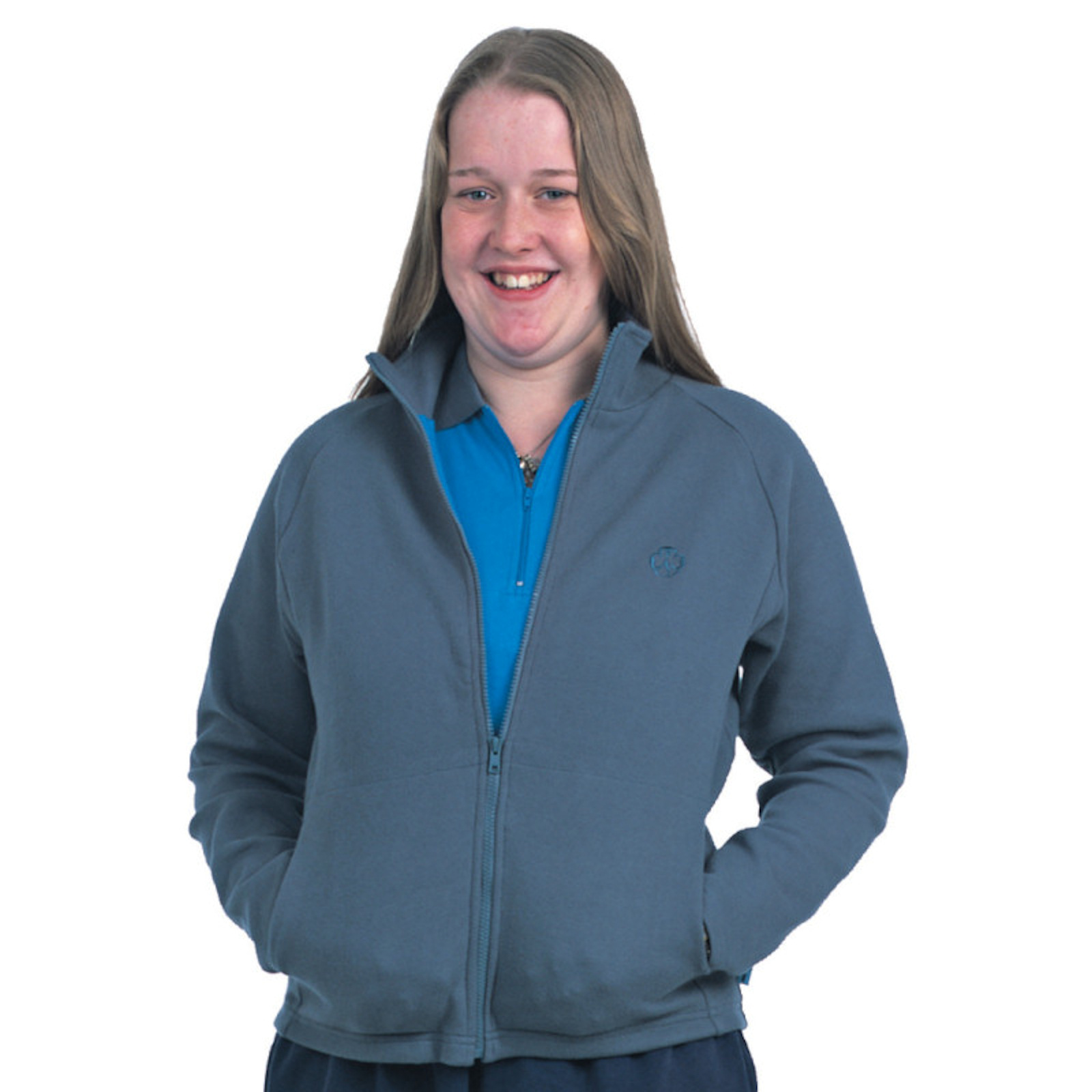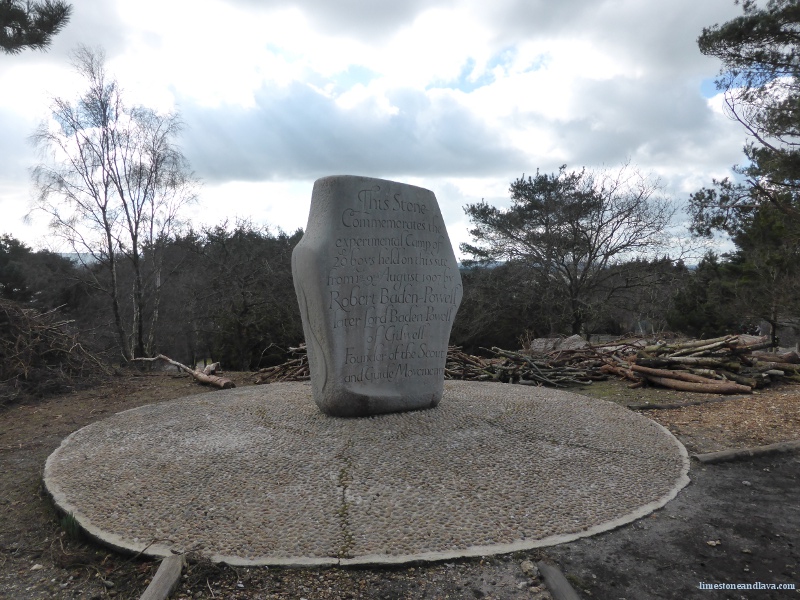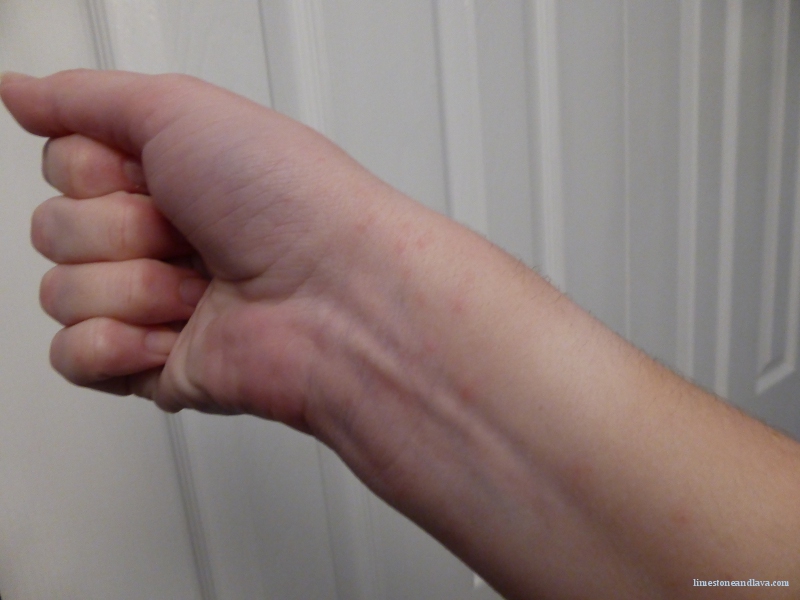Hello, little blog! I’ve neglected you terribly for about the last three weeks. I was in Iceland and then I just didn’t get round to it. But here I am now.
Yesterday I joined a group of Guides and Senior Section and their leaders from presumably all over my County for a Service Day on Brownsea Island. Brownsea is the largest island in Poole Harbour, it’s owned and run jointly by the National Trust and Dorset Wildlife Trust and it’s a big conservation area and nature reserve. It’s more or less closed to the public in winter (it’s just started opening at weekends again) but it’s also the site of the very first Scout camp, held in 1907, from which came Scouts and then Guides and as such, we have a special claim on it, especially if we’re coming to work. There’s a house, South Shore Lodge, which we’ve used for several indoor camps and which is open only to youth groups, there’s the Stone and the campsite (more on that later) and in this particular case, there was a special early boat put on in order to ferry us over to do a bit of gardening.
Toomer Copse was fenced off some fifteen years ago, to keep deer and rabbits out so as to encourage growth. The trouble is, in those fifteen years, it’s grown like crazy. Up until the middle of this week, it was so dense that voluntary wardens had to chainsaw a path through it. By the time we arrived on Saturday, there was a short path in and then two paths off to clearings. Our job was to clear out the vegetation, especially the rhododendrons, which were introduced in the 19th century as a decorative, exotic addition to the local fauna. However, rodis grow like wildfire and they choked out the native pines and flowers, blocked sunlight to the ground, threatened the red squirrels and generally caused so many problems that volunteers have been working on destroying them for the last fifty years. The majority are now gone but there are still clumps in places like Toomer Copse. So one of our jobs was to cut it all out, which often meant cutting down huge clumps of gorse and brambles to get at it. Gorse, strictly speaking, can stay but we were told it recovers extremely quickly and extreme measures like controlled burnings can actually be quite good for gorse, so if we had to cut it back to get at the rodis, that was ok. I was less clear on the brambles. A volunteer told me it grows fruit and the birds like that and I can’t see how that’s a bad thing but he definitely told me to cut it all out. So job one was to destroy any rodi we saw.
Job two was to thin out the pines. They were growing shoulder to shoulder, about six to eight feet high, packed in so tightly that they were destined to shoot up to incredible heights without actually producing any pinecones, which is what the squirrels need. Therefore, for the good of healthy trees and feeding the squirrels, it was necessary to cut down a lot of the pine trees so the ones left were spaced out about two arm-spans apart. It hurt my soul to cut the first one. Even for the greater good, it felt so wrong to chop off a healthy young pine. But like everything, it got easier with practice and soon I was cutting them down without even thinking. It does help, I suppose, that a lot of them were nothing more than stems not much thicker than my thumb, in amongst the undergrowth where you can’t really see that it’s a pine tree. We had two bonfires going, to dispose of all the vegetation, bonfires strictly controlled by the volunteers because Brownsea Island is an absolute tinderbox and the last thing we want is for the whole thing to burn down.
So this copse of trees packed in so tightly you couldn’t fight your way in was cleared incredibly by this hoard and I heard one of the wardens comment “It’s amazing how much you can do when you’ve got enough people.” Teenage girls, mostly, armed with bow saws and loppers, none of us with much previous copse-tending knowledge or skills, several girls who didn’t know what rhododendron was when they set out and we tore down those trees. I personally enjoyed the novelty of being given weapons and told to tear the place apart in the name of conservation.
This is how thick it was. I cut a path into the bushes to take out a rodi hidden inside it all. Yes, I’m in Senior Section uniform. We were told “camp uniform” which generally means either old uniform or unofficial clothing like your Foxlease polo shirt or Centenary top or at least something in approximately your Section’s colours. I’m a bit old for Senior Section but I’m still quite fond of my uniform and it’s still in a pretty decent state so I tend to wear it on camp. A leader in my district donated a couple of the old-style Senior Section zipped jackets a few years ago – they’re not as pretty as the new hoodies but they’re very handy for camp. As it happened, working in the sunshine cutting down trees was far too hot to actually wear it so it’s hung up on a tree somewhere, acting as both peg and also roadsign as the copse became unrecognisably thinned out.
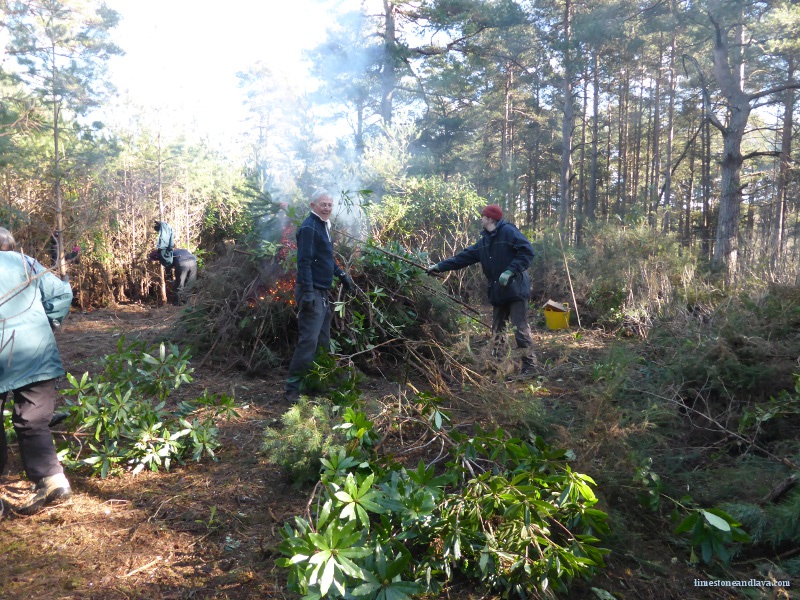 Here’s our bonfire and some of the woodpile.
Here’s our bonfire and some of the woodpile.
I had only the one Ranger with me. She bivvied on Brownsea as a Guide on County camp many years ago but has never otherwise been, so we skipped off down to the Stone at lunchtime.
The Stone commemorates that first camp. It’s tradition to visit it and when we went over in Centenary year, a few new Guides made their Promise next to it. Down the hill is the campsite – or at least, the modern campsite. I have no idea where the original campsite is. There’s also the Baden-Powell Outdoor Centre next to it. The shop was closed but that’s ok, we’re camping here this summer so we’ll buy all the badges and woggles and mugs we want then. Things tend to have the Scout fleur-de-lys and the Guide trefoil and a little picture of the Stone on, if you were in any doubt as to the importance of the Stone, as you can see from the badge. This one is a few years old, to judge from the style of trefoil but it’s pretty much the one I’ve got on my blanket.
So in conclusion, the partnerships between Brownsea Island, Scouting, Guiding and conservation remains strong and also it’s fun to be allowed to tear trees down. And also, my Rangers gets to count the day as one of her Look Wider Phase Ones – either Out of Doors or Community Action, I would think.
Actually, as a final final though, I discovered when I got home that my hands and forearms, the right one in particular, are covered in little red dots. It looks like some kind of rash – which I suppose it just about could be – but what it actually is is dozens of tiny puncture wounds from being repeatedly attacked by brambles. Thorns pricking me through my gardening gloves and getting my wrists between glove and sleeve.
